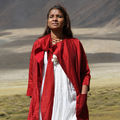Interviews
ICAC lists indicators to assess cotton sustainability
27 Apr '15
3 min read
A report of the International Cotton Advisory Committee (ICAC), which draws on several years of collaborative international efforts to develop a set of standards for measuring sustainability in cotton farming, has recommended a set of indicators to assess and measure progress on the critical sustainability issues for cotton farming.
The report called “Measuring Sustainability in Cotton Farming Systems: Towards a Guidance Framework" also provides an overview of sustainability issues in global cotton farming.
It concluded that that over the past decade, technological advances and the promotion of good management practices, together with increasing pressure from the market, continue to underpin a focus on “sustainable production”. But as new methods and initiatives are applied, there are growing questions as to what the overall outcomes of these efforts are.
The report says that while the ultimate determination of globally appropriate indicators for monitoring and impact assessment must be made through the appropriate political processes, it seeks to outline some of the major considerations to help inform these discussions.
The overview of current indicators being applied across existing cotton voluntary sustainability initiatives (VSIs) provides a bird’s eye view of “current practice” within the sector, which is an indication of current priorities and also, of possible gaps in existing systems. Regardless, these initiatives, combined with other generic impact indicator initiatives from the agriculture sector, provide a rich indicator base to draw from for possible application within the cotton sector.
While the Cotton Report seeks to develop a global set of indicators, it also recognizes that the conditions under which cotton is grown and the issues associated with its cultivation vary enormously due to differing environmental, agro-ecological, climatic, socio-economic and political conditions. For example, a country that generally relies on irrigation will be more interested in including indicators on water usage compared with a country reliant on rainfed production. Similarly, the feasibility of gathering specific indicators (cost, accessibility, accuracy) is likely to vary from country to country, as well as the options and cap abilities for performance improvements.
The recommended set of indicators gave priority to indicators with importance in several production contexts, without suggesting that such indicators are important in all cotton-producing countries.
While the diversity and variability in cotton production and context conditions across regions does not allow for a globally uniform, fixed standing set of indicators that would adequately address sustainability in all producing countries, the recommended indicators represent an important starting point for the national level and provide essential guidance while allowing at the same time for variation.
The report said that given the global focus of the set of recommended indicators and the diversity of conditions under which they therefore need to apply, it would be important that any pilot testing of the framework be undertaken in a range of different farming systems and contexts (for example highly mechanized and labour-intensive; rainfed and irrigated). (SH)
The report called “Measuring Sustainability in Cotton Farming Systems: Towards a Guidance Framework" also provides an overview of sustainability issues in global cotton farming.
It concluded that that over the past decade, technological advances and the promotion of good management practices, together with increasing pressure from the market, continue to underpin a focus on “sustainable production”. But as new methods and initiatives are applied, there are growing questions as to what the overall outcomes of these efforts are.
The report says that while the ultimate determination of globally appropriate indicators for monitoring and impact assessment must be made through the appropriate political processes, it seeks to outline some of the major considerations to help inform these discussions.
The overview of current indicators being applied across existing cotton voluntary sustainability initiatives (VSIs) provides a bird’s eye view of “current practice” within the sector, which is an indication of current priorities and also, of possible gaps in existing systems. Regardless, these initiatives, combined with other generic impact indicator initiatives from the agriculture sector, provide a rich indicator base to draw from for possible application within the cotton sector.
While the Cotton Report seeks to develop a global set of indicators, it also recognizes that the conditions under which cotton is grown and the issues associated with its cultivation vary enormously due to differing environmental, agro-ecological, climatic, socio-economic and political conditions. For example, a country that generally relies on irrigation will be more interested in including indicators on water usage compared with a country reliant on rainfed production. Similarly, the feasibility of gathering specific indicators (cost, accessibility, accuracy) is likely to vary from country to country, as well as the options and cap abilities for performance improvements.
The recommended set of indicators gave priority to indicators with importance in several production contexts, without suggesting that such indicators are important in all cotton-producing countries.
While the diversity and variability in cotton production and context conditions across regions does not allow for a globally uniform, fixed standing set of indicators that would adequately address sustainability in all producing countries, the recommended indicators represent an important starting point for the national level and provide essential guidance while allowing at the same time for variation.
The report said that given the global focus of the set of recommended indicators and the diversity of conditions under which they therefore need to apply, it would be important that any pilot testing of the framework be undertaken in a range of different farming systems and contexts (for example highly mechanized and labour-intensive; rainfed and irrigated). (SH)
Fibre2fashion News Desk - India
Popular News
Leave your Comments
Editor’s Pick
































-Ltd..jpg?tr=w-120,h-60,c-at_max,cm-pad_resize,bg-ffffff)





.jpg?tr=w-120,h-60,c-at_max,cm-pad_resize,bg-ffffff)
.jpg?tr=w-120,h-60,c-at_max,cm-pad_resize,bg-ffffff)






